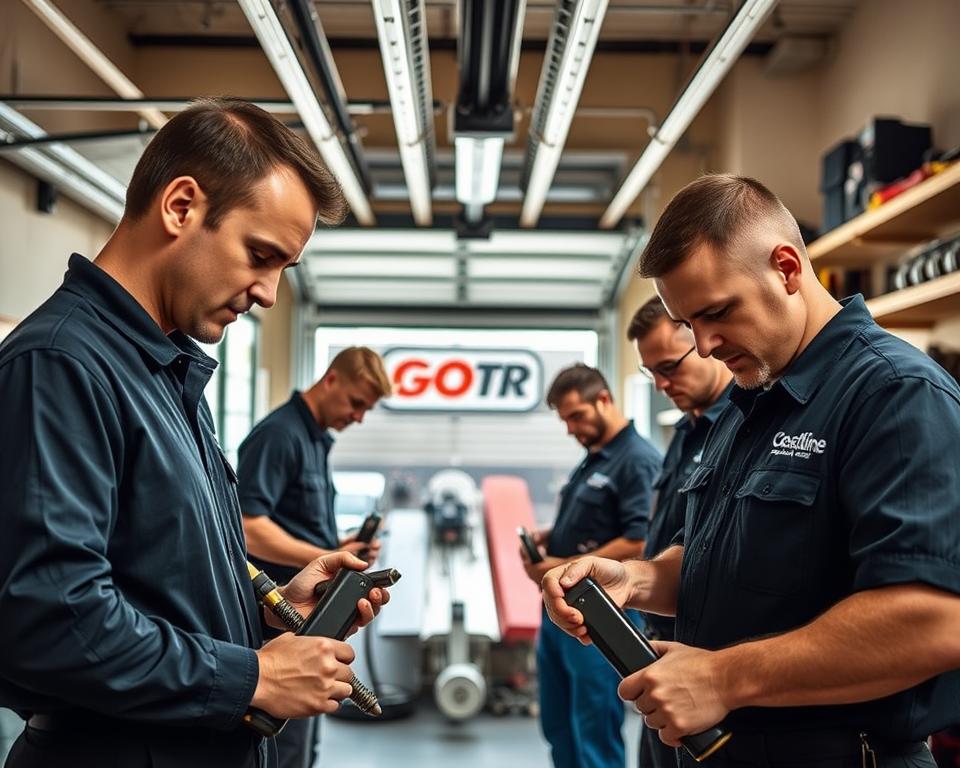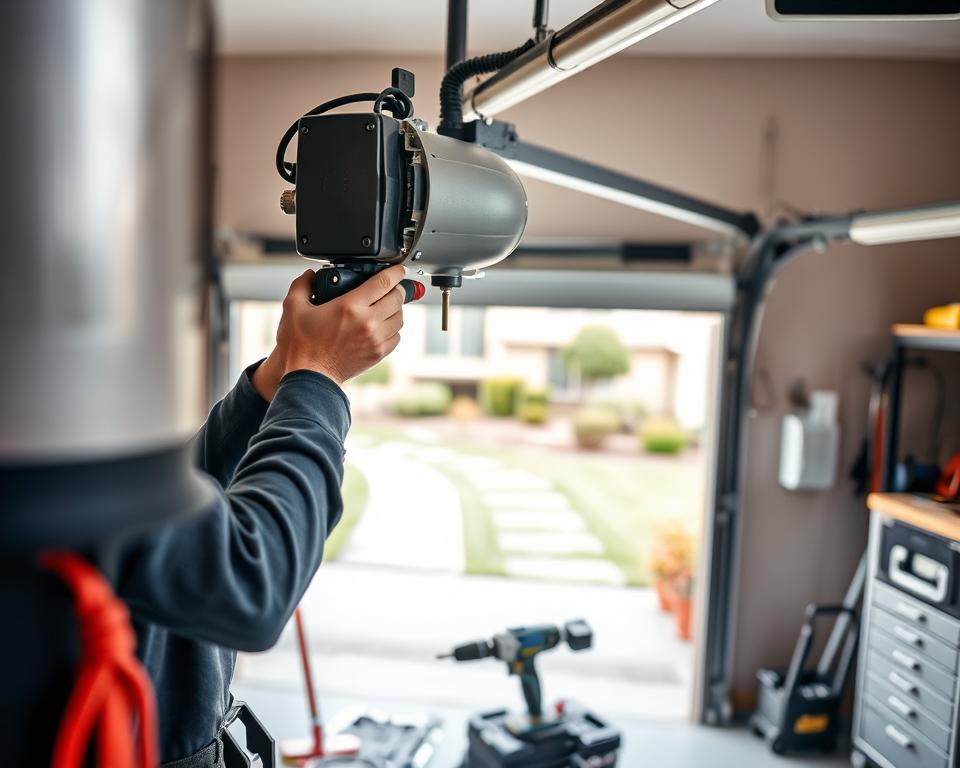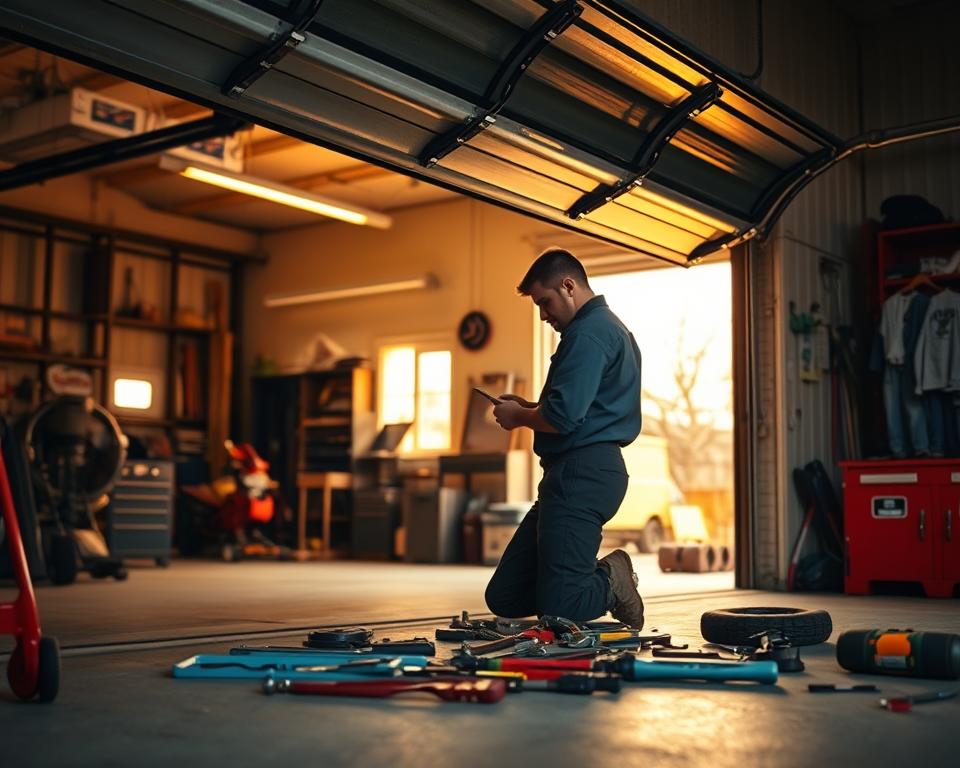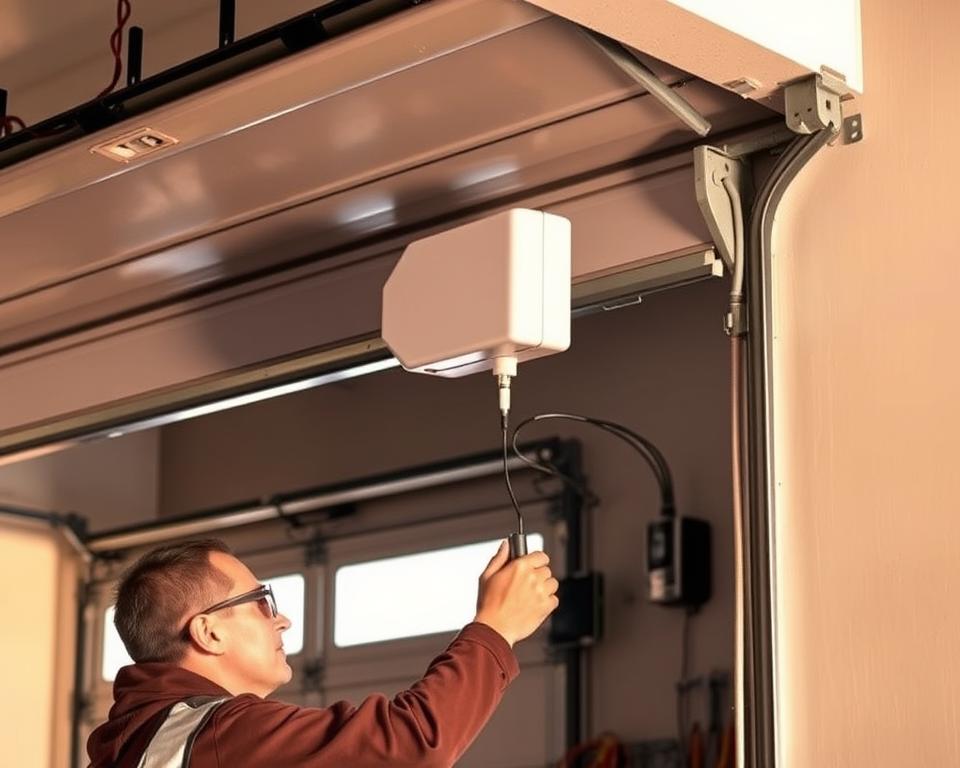Garage Door Roller Setup in Orange Ca – Expert Assistance
Have you ever pondered why your garage door struggles operating effectively or creates unusual noises? It could be time to explore garage door roller installation in Orange Ca. A efficient garage door is vital for both convenience and wellbeing. Coastline Garage Doors furnishes expert support, ensuring your garage door system performs impeccably. This lets you concentrate on what’s important. We’ll investigate why expert garage door services, like roller installation, are crucial for a safe and reliable property.
Critical Points
- Comprehending the part of garage door rollers in performance.
- Identifying signals that indicate the need for roller replacement.
- Choosing professional services like Coastline Garage Doors secures excellent service.
- The value of servicing your garage door’s rollers for durability.
- Financial factors involved in garage door roller installation.
Comprehending Garage Door Rollers
Garage door rollers are key to a garage door’s unhindered performance, conducting it back and forth the tracks. They are vital for the door’s functionality and persistence. Householders ought to understand the distinct varieties of emergency garage door repair near me and why excellence is important for peak functioning.
What Are Garage Door Rollers?
Garage door rollers are miniature, cylindrical parts that support garage doors travel vertically and horizontally. Made from various materials, they slide into tracks on each flank of the door. Their principal function is to uphold the door’s weight, ensuring it opens and closes easily and consistently.

Classes of Garage Door Rollers
In Orange Ca, occupants discover several classes of garage door rollers. Here are a few typical ones:
- Nylon Rollers: Durable and quiet, nylon rollers are a leading choice for residential use.
- Steel Rollers: Sturdier than nylon, steel rollers typically have ball mechanisms for enhanced effectiveness but might be more clamorous.
- PVC Rollers: Insubstantial and budget-friendly, PVC rollers are barely durable and not ideal for bulky doors.
Relevance of Quality Rollers for Effortless Action
Excellent rollers are necessary for a garage door’s fluid operation. Choosing superior pieces in Orange Ca elevates operation and expands the system’s lifespan. Excellent rollers minimize drag, avoid degradation, and boost wellbeing by hindering breakdowns. A smoothly running garage door provides handiness, protection, and energy efficiency to your dwelling.
Indicators You Must Have Garage Door Roller Replacement
A garage door’s functionality heavily depends on its rollers. Detecting first markers of problems is vital. Checking specific indicators can prevent larger complications and expensive repairs. Here are principal signs that show a requirement for garage door roller substitution.
Abnormal Acoustics When Lifting or Closing
Odd sounds from the garage door amid performance often point to a problem. Scraping, screeching, or rattling sounds suggest wear and tear on the rollers. Addressing this early may avert additional decline and more significant difficulties eventually.
Imbalance of the Garage Door
Misalignment of a garage door may generate various complications. If the door presents itself tilted or struggles to open and close properly, it possibly demand roller renewal. Consistent misalignment will impact the door’s utility and safeguarding.
Observable Impairment on Rollers
Regular examinations of the garage door rollers might help pinpoint apparent destruction. Fractures, chips, or decay point to they are coming to the finish of their existence. If the skins of the rollers display substantial wear, it may be time for swap.
Extreme Trembling of the Garage Door
Intense trembling while operating the garage door might point to failing rollers. This vibration is not only a annoyance but will also gather degradation on supplementary elements. If this complication remains, it signals an immediate need for response to stop breakdowns.
Why Choose Coastline Garage Doors for Installation
Deciding on Coastline Garage Doors for your garage door roller installation is a selection for high-grade and reliability. Their staff of expert technicians is prepared to handle your installation needs with proficiency and mastery.
Knowledgeable Mechanics with Periods of Skill
Coastline Garage Doors features a expert team of expert specialists with seasons of experience. Their extensive training authorizes them to assess your garage door system accurately. They then perform installations with exactness.
Top-grade Garage Door Elements
During installations, only high-quality garage door parts are implemented. This devotion to superiority ensures lifespan and optimal performance. It gives peace of mind, knowing your garage door might operate seamlessly over time.
Excellent Patron Assistance
Buyer pleasure is a leading interest at Coastline Garage Doors. The personnel offers exceptional client assistance, prepared to answer any inquiries. They guide you throughout the installation process, verifying a effortless and satisfying event.
Economical Pricing and Transparent Evaluations
Coastline Garage Doors stands out with transparent assessments and affordable pricing. Consumers receive honest assessments of expenditures. This ensures they recognize what to await without masked prices, aiding to continue within monetary limit.
Garage Door Roller Installation in Orange Ca
Understanding the installation operation for garage door rollers in Orange Ca is key for effortless operation and endurance. Whether you decide on to do it yourself or hire specialists, recognizing the processes facilitates in making enhanced decisions.
Methodical Installation Technique
The installation of garage door rollers comprises several essential procedures:
- Initiate by disconnecting the garage door from the opener. This process secures reliable access.
- Take out the former rollers carefully, recording their position.
- Fit replacement rollers by fastening them in the tracks. Make sure they fit properly for finest performance.
- Reattach the garage door to the device, ensuring smooth functioning.
- Examine the door many times to ascertain successful installation.
Needed Instruments and Equipment
Owning the right utensils for garage door installation is vital. The subsequent items are necessary:
- Power drill for securing the rollers.
- Manual rotators for operating hardware.
- Defensive eyewear to shield your optics.
- Sizing tape for correct arrangement.
- Wrenches for tweaking and fastening bolts.
Usual Problems During Garage Door Roller Installation
Affixing garage door rollers can be challenging. Identifying the usual difficulties can render the process more effective. Misalignment is a regular difficulty, leading to subpar functioning or damage. It’s also vital to manage old components correctly to avoid installation and functionality issues.
Improper Alignment Amidst Installation
Off-center placement is a regular issue throughout garage door roller installation. Only a tiny off-center placement can impact the door’s operation. It’s vital to confirm all parts are suitably aligned. Incorrect arrangement can create attrition and protection perils.
To elude this, meticulous measurement and alteration throughout installation are necessary.
Managing Used or Eroded Components
Aged garage door elements can challenge the installation. Degraded components possibly not align with fresh rollers, inducing further troubles. In advance of initiating, examine all elements for deterioration. This assures a seamless installation and improved enduring operation.
Price of Garage Door Roller Installation in Orange Ca
Recognizing the price of putting in garage door rollers in Orange Ca calls for examining multiple main components. These contain the complexity of the undertaking, the grade of supplies, and labor expenses. This knowledge benefits homeowners arrange their budgets successfully for garage door endeavors.
Factors Impacting Installation Expenses
Several elements decide the cost of installation in Orange Ca:
- Kind of Rollers: High-quality or specialized rollers might come at a premium.
- Labor Payments: Capable worker could boost overall installation outlays.
- Situation of Established Hardware: If previous components have to be exchanged, expenses can climb significantly.
- Installation Complexity: A unchallenging task will generally expenditure reduced than a complicated installation needing supplementary work.
Contrast with Various Garage Door Services
When comparing costs, garage door roller installation costs diverge from other services like fixes or complete exchanges. The chart below shows common cost ranges for each service:
| Service Type | Average Cost Range |
|---|---|
| Garage Door Roller Installation | $150 – $300 |
| Garage Door Repairs | $100 – $250 |
| Garage Door Replacement | $800 – $1,500 |
Benefits of Skilled Installation Services
Selecting professional installation for garage door roller systems offers beyond just assembly. Residents enjoy comfort, knowing safety is a key concern. Qualified professionals ensure all parts fit properly, lowering hazards from faulty installations.
Security and Danger Minimization
Professional installation significantly enhances safety. Experts in garage door mechanics work with weighty elements safely. This minimizes accidents from incorrect installation or future problems. They apply the right instruments and techniques, avoiding hazards that non-professionals could disregard.
Securing Long-Term Operation
Employing pros also guarantees extended effectiveness of your garage door setup. They follow producer specs, increasing the door’s life and securing effortless operation. This suggests reduced fixes and service expenditures, preserving minutes and funds for house owners.
Understanding Garage Door Maintenance
Periodic care of your garage door is critical for its safe and effective functioning. Neglecting maintenance might create pricey fixes and safety dangers. A regular routine of assessments and maintenance makes certain your door performs adequately and endures extended periods.
Relevance of Routine Servicing
In Orange Ca, periodic garage door maintenance is essential to detecting troubles quickly. It prevents substantial troubles in the future. Routine inspections aid detect damage, permitting for rapid solutions. This approach improves your garage door’s lifespan and productivity.
Recommendations for Increasing Roller Durability
Suitable maintenance for your garage door rollers might significantly enhance their functionality. Here are various recommendations to keep up your rollers:
- Preserve the roller tracks clean and without rubbish.
- Oil the rollers routinely to provide fluid operation.
- Examine for attrition and substitute any injured rollers promptly.
- Make sure the garage door is suitably oriented to escape unwarranted stress on the rollers.
When to Reach out to a Expert
Understanding when to pursue professional aid is just as vital. If you notice peculiar clamor, notice substantial asymmetry, or undergo further problems, contact an professional. They could conduct a comprehensive assessment and correct any troubles, ensuring your garage door runs productively.
Extra Garage Door Answers
Coastline Garage Doors delivers a selection of assistance past just roller installation. Homeowners acquire advantage from a full array of remedies, guaranteeing all garage door activities are encompassed. Routine servicing and immediate maintenance help increase the life of your garage door. They also enhance security and convenience.
Garage Door Repair Services in Orange Ca
Garage door repair Orange Ca is essential for handling various issues. From slight problems to substantial harm, expert technicians are ready to support. They determine and remedy issues speedily, containing door positioning, spring substitutions, and opener corrections. This guarantees your garage door operates perfectly.
Garage Door Replacement Services in Orange Ca
In various instances, a new garage door is necessary. Opting for a recent one can boost your home’s aesthetic, safety, and productivity. Coastline Garage Doors assists pick the finest kinds for your demands and finances. They ensure a trouble-free installation process.
Residential Garage Door Services in Orange Ca
Residents in Orange Ca can count on a extensive range of residential garage door services. These services confirm your garage doors operate seamlessly and safely, giving you peace of mind. Periodic maintenance is key to your garage door’s endurance. Prompt adjustments may also halt small troubles from transforming into major complications.
Comprehensive Care for Your Garage Doors
Complete upkeep involves routine inspections, alterations, and fixes to keep your garage door in top shape. Professionals examine the door’s components like springs, rollers, and tracks. This confirms each part is working flawlessly, preventing unanticipated failures and increasing your garage door’s longevity.
Emergency Services Available
Having access to emergency garage door services is crucial for house owners. If your garage door stops working or turns harmed, assistance is obtainable instantly. Skilled experts in Orange Ca are prepared to quickly remedy the problem, returning your garage’s performance and protection. Recognizing assistance is just a phone call away might greatly minimize anxiety in emergencies.
Final Thoughts
Garage door roller installation is essential to preserving your property safe and working effectively. Coastline Garage Doors in Orange Ca delivers professional service, applying high-grade rollers for the greatest performance. It’s vital to spot when you necessitate new rollers or professional support to preserve your garage door mechanism in prime state.
This writing has discussed why selecting the appropriate rollers matters, the installation method, and the benefits of cooperating with expert techs. Coastline Garage Doors is devoted to furnishing exceptional service that concentrates on superiority and protection. They make sure your garage door functions effortlessly and competently.
Selecting professional garage door roller installation is more than just about sustaining objects running. It’s about having comfort. By going with Coastline Garage Doors, you’re producing a clever decision towards keeping your property secure. You’re also making certain your garage door will function reliably for years to follow.









